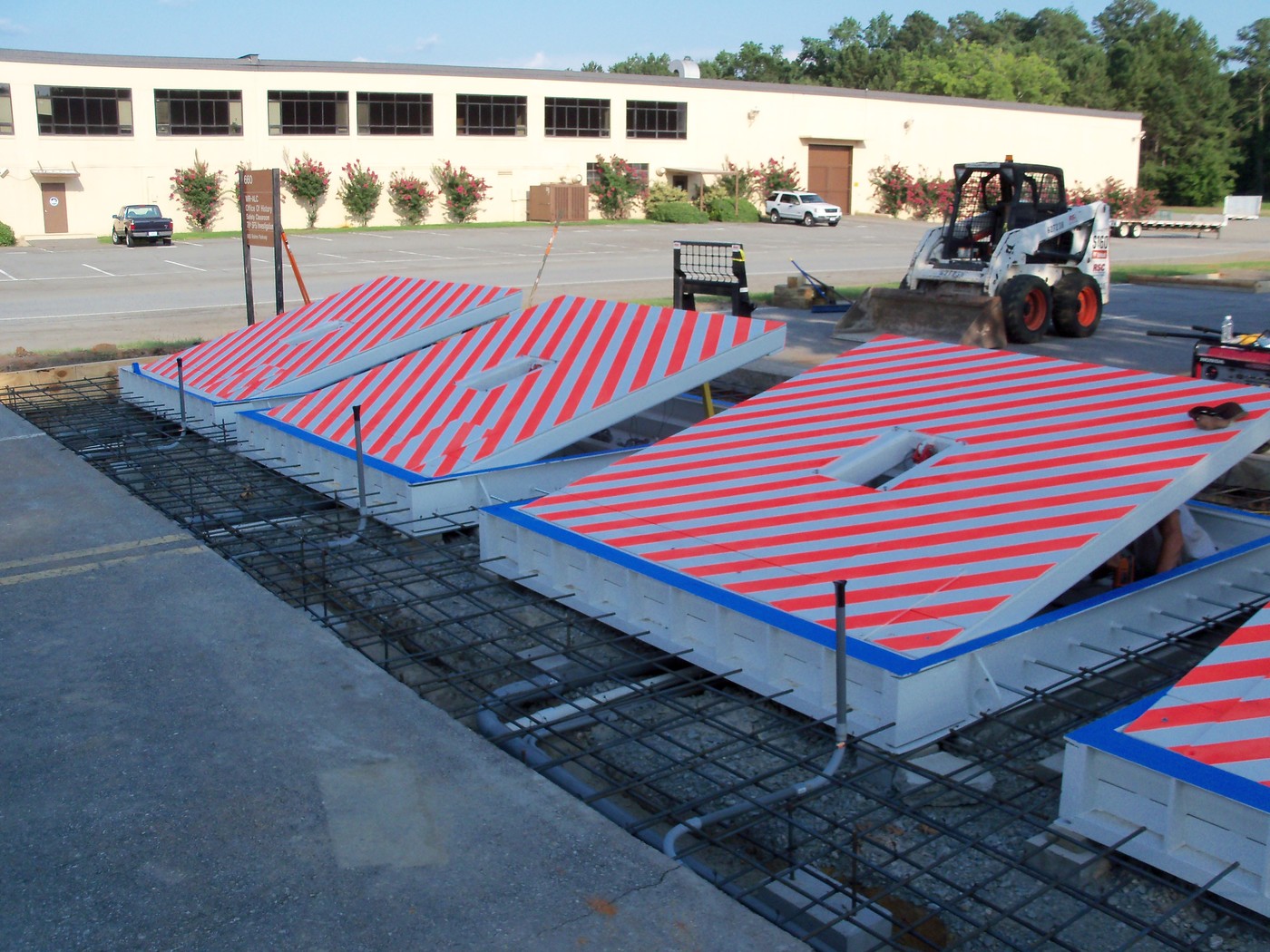8 Easy Facts About Wedge Barriers Explained
Wiki Article
Wedge Barriers Can Be Fun For Everyone

The spring rod 58 is coupled to a camera(e. g., webcam 80 shown in FIG. 4) of the training device 50. The springs 60 disposed about the springtime rod 58 are kept in compression by springtime supports 62, consisting of a fixed spring support 64. That is, the fixed spring support 64 is repaired relative to the structure 14 et cetera of the bather 10.
The Only Guide for Wedge Barriers
g., spring support 65 )might be repaired to completion of the springtime pole 58 to allow compression of the springs 60. As the springtimes 60 are pressed in between the spring supports 62, the spring assembly 54 generates a force acting upon the camera paired to the springtime rod 58 in an instructions 66. For instance, the continuing to be pressure put on the camera to release the wedge plate 16 may be provided by an electromechanical actuator 84 or various other actuator. Thus, the springtime assembly 54 and the actuator 84(e. g., electromechanical actuator)might run together to equate the camera and lift the wedge plate 16.
As pointed out over, the springtime setting up 54 applies a continuous pressure on the web cam, while the electromechanical actuator might be regulated to apply a variable pressure on the camera, consequently making it possible for the lifting and lowering( i. e., deploying and withdrawing )of the wedge plate 16. In specific embodiments, the consistent force used by the springtime assembly 54 might be flexible. g., electromechanical actuator) is disabled. As will certainly be appreciated, the spring assembly 54 may be covered and shielded from debris or other aspects by a cover plate(e. g., cover plate 68 received FIG. 4) that might be considerably flush with the raised surface area 38 of the structure 14. As discussed over, in the released setting, the wedge plate 16 serves to obstruct gain access to or travel past the barrier 10. The obstacle 10(e. g., the wedge plate 16 )might block pedestrians or vehicles from accessing a residential or commercial property or path. As gone over over, the obstacle 10 is attached to the support 30 protected within the structure 14,

front brackets 71. Because of this, the link settings up 72 might pivot and rotate to allow the collapse and expansion of the affiliation settings up 72 throughout retraction and deployment of the bather 10. The linkage assemblies 72 cause motion of the wedge plate 16 to be limited. As an example, if a vehicle is traveling towards the deployed wedge plate 16(e. For instance, in one condition, the safety legs 86 you could try here may be prolonged throughoutupkeep of the obstacle 10. When the safety legs 86 are deployed, the security legs 86 sustain the weight of the wedge plate 16 versus the surface 12. Consequently, the lifting mechanism 50 may be deactivated, serviced, removed, changed, and so forth. FIG. 5 is partial perspective view of an embodiment of the surface-mounted wedge-style obstacle 10, highlighting the web cam 80 and the web cam surface areas 82 of the lifting mechanism 50. Specifically, two cam surface areas 82, which are described as lower webcam surfaces 83, are placed listed below the web cam 80. The reduced web cam surface areas 83 might be fixed to the surface 12 (e. For instance, the lower web cam surface areas 83 and the placing plate 85 might develop a solitary piece that is protected to the anchor 30 by screws or other mechanical fasteners. In addition, 2 web cam surface areas 82, which are referred to as upper webcam surfaces 87, are placed over the camera 80 and paired to (e. In various other embodiments, interfering layers or check over here plates may be placed in between the surface 12 and the reduced web cam surface areas 83 and/or the wedge plate 16 i loved this and the upper web cam surface areas 87 As pointed out above, the camera 80 equates along the web cam surface areas 82 when the wedge plate 16 is lifted from the withdrawed setting to the released setting. Additionally, as pointed out above, the springtime assembly 54 (see FIG. 3 )might supply a force acting upon the webcam 80 in the instructions 102 through springtime rod 58, which might minimize the force the electromechanical actuator 84 is needed to relate to the web cam 80 in order to actuate and lift the wedge plate 16. 1 )to the released setting(see FIG. 4). As shown, the cam 80 consists of track wheels 104(e. g., rollers), which call and equate along the cam surface areas 82 throughout operation.
Report this wiki page